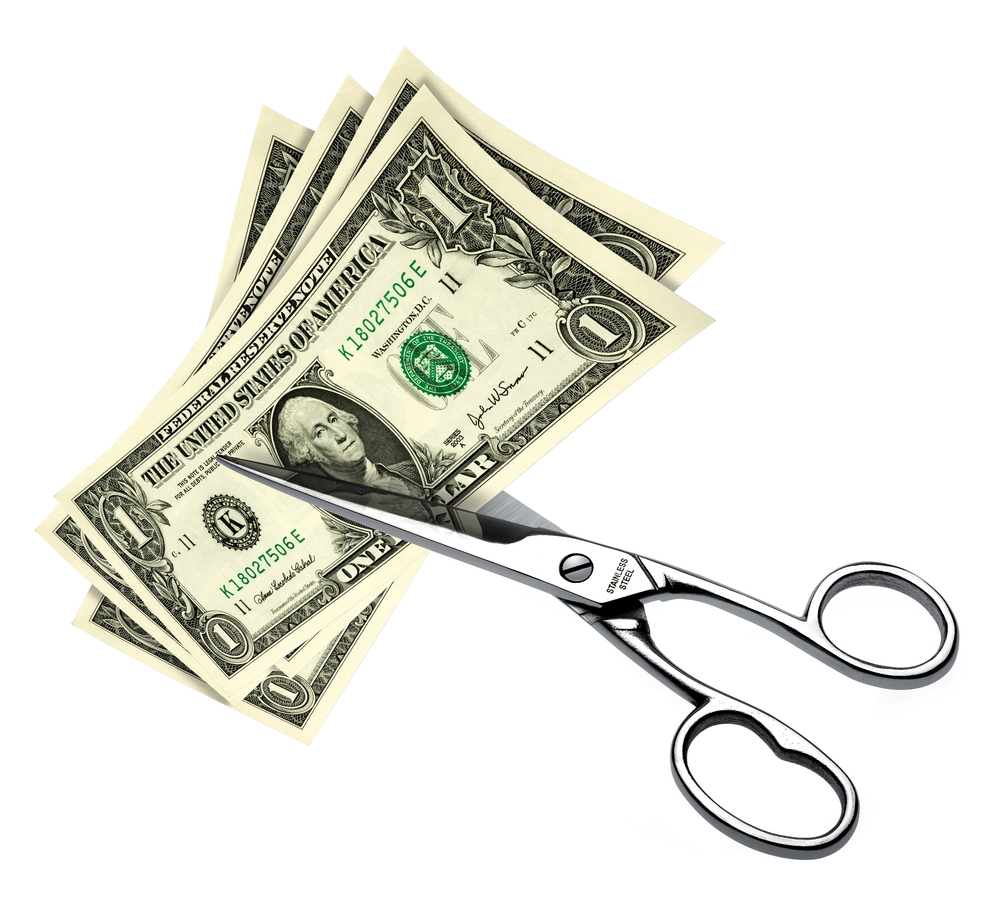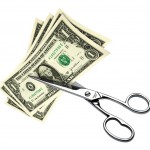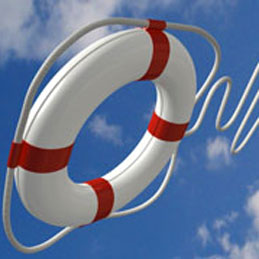 No doubt you have heard of the seven cardinal sins of the Christian religion – wrath, greed, sloth, pride, lust, envy and gluttony? But did you know that there are also seven lethal sins of selling? And they’re deadly because they’re toxic to your business and your bank account.
No doubt you have heard of the seven cardinal sins of the Christian religion – wrath, greed, sloth, pride, lust, envy and gluttony? But did you know that there are also seven lethal sins of selling? And they’re deadly because they’re toxic to your business and your bank account.
Unfortunately, if you commit even one of them, you’ll find that your sales leads will shrivel up and die right before your eyes…
If you want to capture the attention of more prospects and increase sales, you need to stop committing all of these deadly sins.
Are you guilty of:
- A lame approach or introduction?
- Wasting your prospect’s time with stuff that is important to you but not to them?
- Failing to identify and understand your customer’s pain?
- Forgetting to give your audience a clear message why they should choose you?
- Selling products, features or benefits instead of solutions to their pain?
- Neglecting to prove beyond a shadow of a doubt that you can cure their pain?
- Making it easy for them to talk themselves of out of the sale? or
- Giving too many options (or not asking for the sale)?
Thankfully, there is a cure to help you increase sales and it is a whole lot simpler than you might imagine. Which is lucky for you – because right now, you are killing leads and losing sales with each sin that you commit.
Everyone knows that a solid, consistent stream of prospects and sales are vital to the health and success of your business. And right now, you are spending a lot of money each month on activities and communications where 99% of your audience chooses not to buy from you. It’s a lot of money to waste on sales presentations, calls and emails that aren’t working, isn’t it?
Now depending on which deadly sins you are committing (one, two or all seven of them), many of your prospects have gone to one of your competitors to get their pain cured. I would like to show you exactly where you went wrong and what you need to do to fix your message and increase sales. I want to show you how to turn your message into one that your audience is dying to say “YES” to.
- Keep the Lights on – Often presenters switch off the lights in a room so that the slides can be read more easily. Besides encouraging the decision making part of your prospect’s brain to fall asleep, this fatal move also diverts attention to the screen – when you need to do to increase sales is have your audience focus their attention on the conversation you are having with them.
- Capture attention upfront – In order to stand out and be remembered, you need to open with a question, story, myth-busting statement, or picture that is relevant to your audience. The best way to increase sales is to show them you understand (and can solve) their #1 source of pain.
- Stop wasting time on you – Never waste your time telling potential customers about you. 100% of your message should focus on your prospect or customer, and how your solution will cure her pain, keep her safe, or make her life better. If you message is relevant and your customer is engaged, it will increase sales.
- A picture is worth 1000 words – Your brain is hardwired to process visual cues and act before you have time to think things through carefully. If you want to connect with your audience and increase sales, you need to present fewer words, graphs and statistics and start showing them in pictures how their life will be better with your solution.
- Simplify your message – Most slides have far too many words on them to be persuasive. Less is more – if your audience is too busy reading, they cannot possibly engage with you and your key message. The brain can only process and memorize 3 or 4 key points at a time. If your message is more complex than that, it simply will not be remembered.
- Use stories to communicate your key points – messages that cause your customers to reconnect with or rediscover strong emotions from their past and associate those with your solution, are 10x more likely to trigger the part of the brain that decides.
- Crank up the contrast – In order to trigger a decision quickly and increase sales, you must stand out. Your customer needs to feel the difference between your solution, your competitor’s solution, doing it themselves, or doing nothing.
By mastering these 7 steps, you are now ready to go back to the beginning, rework what you say and how you say it in order to influence a speedy decision in your favour and increase sales. These 7 steps will help you to STOP falling prey to the 7 deadly sins of selling that we talked about earlier. They are going to help you increase the effectiveness of your message and also reduce the amount of time and money that you need to spend chasing leads and sales.
When you make it easier for your audience to see and grasp your message, he/she is more likely to decide and will on some level appreciate the fact that you have not wasted his time and energy with stuff that wasn’t important to him.
John Wannamaker may not be a household name but he opened the first department store in Philadelphia in the late 1800’s and is believed to be the inventor of the price tag and the seasonal sale. He was the first retailer to place a half-page newspaper ad, and also the first full-page ad five years later. He is widely considered to be one of the fore-fathers of advertising and credited with the famous phrase: “Half the money I spend on advertising is wasted; the trouble is, I don’t know which half.”
His words survive as one of the most frequently quoted clichés in marketing and advertising, even after radio, TV and now the internet, have replaced the dominance of print advertising.
Why with all we’ve accomplished in the last one hundred and twenty years, is this quote still relevant and significant to you (and to all marketers) today?
In fact how do you know you’re not throwing away 2/3 of your advertising budget? Or perhaps even as much as 3/4?
How can you be sure that your next campaign, sitting on your desk waiting for your approval, won’t be an abysmal failure – sucking your bank account dry and producing no measurable influx of qualified leads and sales?
Do you know with certainty which half of your advertising budget is wasted? Want if you needed to find out?
Right now, your audience is getting harder to reach in all the traditional media channels, and the rules of marketing have changed. Print newspaper readership, radio listeners and even TV viewers are down. Consumers have adapted to new technologies – the internet, iTunes, podcasts, downloads – and can now comfortably avoid unwanted advertising in many of these old channels.
Many of the old ways are being replaced by new ones. The internet, content marketing, video and social media have emerged as the new, dominant players. To succeed in this new realm of advertising, requires a shift in both mindset and strategy.
You used to be able to get away with talking at your prospects (or having one-way conversations), now you must respond to their comments (positive and negative) in real time.
Where five years ago you could simply focus on spending less to find more local prospects, now you must excel at “being found” in a sea of global competitors.
Thankfully, these new mediums bring with them two significant benefits – targeting and measurability. Finally, improving your odds of determining which half of your advertising budget is wasted, is not only possible, but refreshingly do-able. You simply have to know which tips and tools to use to maximize your return on investment (ROI).
Here are five practical tips for developing an effective measurement strategy for your online and offline marketing communications – (and for determining which half of your advertising budget is wasted):
1) Monitor all incoming leads
Where possible, place a unique phone number (or email address) in different media placements to gauge which ad creative, copy, design elements or physical placement garners the most qualified traffic and sales. Each unique number or email address can easily be re-routed to your primary incoming line or email, so you can streamline the process of receiving and replying to these valuable enquiries. To minimize confusion with your target audience, try to refrain from using too many different numbers at once.
For some brands, that are highly identifiable and use a memorable phone number, tracking may not be viable. As an alternative, try recording the inbound calls and use the insights to train your sales team. While it may cost more, the recorded conversations will provide significant insight into the interest level, FAQ’s, objections and pain/issues of your prospects.
2) Use Split Testing
When you see a banner, video, text or display ad online, it has been sent to your computer or mobile device from an ad server. In most cases, what this means is that the advertiser will have been given the opportunity to split test their ads – to change their online creative in real time to monitor impressions, clicks, engagement and conversions. Essentially some of the audience will see one version of the ad, while others may see different versions.
But split testing doesn’t just apply to online ads and websites. In fact it can be used effectively with any online or offline marketing piece to test different creative, copy, or calls to action. It allows your audience to tell you in tangible terms which messages they prefer and are inclined to respond to favourably.
3) Set Up Specific Landing Pages
Most small business owners will make the mistake of wasting a lot of money on ads to send traffic direct to their homepage. More often than not, 90% of this traffic will bounce off your website within seconds because the content they are interested in is either not featured prominently on the homepage or is just too hard to find. In order to maximize the engagement of your traffic and your ROI, you need to ensure that you are taking your leads to pages where the specific content and offer you are advertising is the ONLY information presented.
The easiest way to do this is to set up landing (or private) pages on your site with unique URLs for each offer. The landing page will give each user a more customized experience and it will allow you to set the stage for an inquiry, call to action or sale.
These landing pages are also extremely effective for allowing you to track and measure ROI from both online and offline ads – when a prospect converts, you can directly attribute that conversion to a specific marketing piece because the landing page URL is unique for each one. Where possible, remember to use a user-friendly URL (one that is short, relevant and easy to remember) to drive traffic from offline media – it will boost retention, recall and action by up to ten times.
4) Google Analytics
Google Analytics is an invaluable tool that can help you measure what is working and what isn’t on your website. However, just like the human brain, most site owners haven’t fully tapped into the full potential and power of it. In addition to telling you where your traffic is coming from and which search terms or links were used to find you, Google Analytics also measures where users click most on a given page, how long they spent on your site and where they go when they navigate away from your page. Google analytics can provide you with enough data to isolate and eliminate marketing that’s not generating profitable growth.
Research indicates that the average conversion rate for a website is between 2.2 – 4%. What this means is that 96-97.8% of the visitors that came to your site today, left without taking any action. They key to minimizing the leakage and maximizing the percentage that remember your message and take action lies in analysing the data that Google can provide on your website traffic and trends. It doesn’t make sense to spend more money on marketing if a large percentage of your audience is choosing not to take action.
5) Stop Chasing Clicks and Eyeballs
A click (or eyeball viewing your offline ad) means nothing to your business. It earns no revenue and creates no brand equity. Your advertising has to have a tangible end goal – and it shouldn’t be to reach the most eyeballs or generate lots of clicks. To have a successful business, you need people to discover how you can cure their pain, seek more information, join your list, or purchase your product/service. Success lies not in how many people know what you do but rather in how many you are able to connect with and inspire to say “yes” to your product/service.
 Today I want to share with you 2 things that you should never do/include in your sales or marketing message, if you want to get more customers to your business.
Today I want to share with you 2 things that you should never do/include in your sales or marketing message, if you want to get more customers to your business.
To prove my point, I’m going to share with you two examples of what NOT to do.
I saw a billboard recently on a major freeway. It read “Texting While Driving KILLS”. Then down below in fine print were the words “For more driving tips, text ‘SAFETY’ to 79191.” Now I’m sure you are probably laughing or at least smiling right now because this is an obvious case of sending a mixed message. And you’re right, I’m sure it is very clear to you why this message is ineffective. But the sad part is – this type of miscommunication or presentation of conflicting ideas is seeping in and polluting your sales and marketing materials every day. To get more customers to your business, you have to stop making this costly mistake.
Take for example your website, your eNewsletter or your brochure/catalog. What exactly are you asking your prospect or customer to do? Did you make the mistake of trying to cram 3 or 4 competing requests onto one page? Did you ask them to buy your product, join your database, visit your blog and watch your latest video? Chances are, you got really excited about what you do and you wanted to share everything you could on just that one tiny page. And I can understand why you got excited but you confused your audience and most of them walked away because what you wanted them to do wasn’t clear.
Now what you did may not have been as blatant as “For more driving tips, text ‘SAFETY’ to 79191.” However, the end result was the same.
If you want to get more customers and prospects to your business, you need to focus on communicating one clear message. If your message is clear and there is only one action that they could take, you will find that the number of people who step forward and take that desired action will go up dramatically.
Now that brings me to my second point.
The second mistake I don’t want you make is to use words or sentences that are confusing. Take for example this sign I saw outside a motel – “Free Wifi Starting at $59.99”. I think the motel owner who put up this sign was either in a rush or ran out of space because he forgot a few important words. What he probably meant to say was “Free Wifi. Rooms starting from $59.99”. He only forgot two small words but those simple words made the difference between a message that was clear and one that made absolutely no sense at all.
Now you may not be offering free wifi but I bet you may have used or at least seen terms like “scalable architecture”, “a customer-centric model”, “ holistic approach” or “results-based focus”. These words mean nothing to the reptilian brain (the part of your customer’s brain that decides and takes action). That part of the brain is 45million years old and it struggles to process and understand complex words, numbers, unfamiliar symbols and graphs that contain too much information. If you want to speed up the decoding process and make it easier to get more customers to your business, you need to make your message simple. Choose words that are clear and easy to understand. Complete your thoughts and sentences – don’t make it difficult and give your customer the excuse – “I need to think about it”. If your customer has too think too hard to decode your message, he simply won’t make a decision
Now I want you to be honest with yourself – is there a chance you might be sending mixed messages to your potential customers? Are your sales/marketing messages clear and succinct? If not, now is the best time to go back and re-write your materials. If you want to get more customers to your business, you need to simplify what you are asking them to do and use language that is easy to interpret.
 For those of you who are in the retail industry, you may have noticed a recent trend to clean up in-store environments – reduce shelf heights, remove dense ends and dump bins, widen aisles etc. – in order to increase comfort and make the shopping experience less stressful for customers.
For those of you who are in the retail industry, you may have noticed a recent trend to clean up in-store environments – reduce shelf heights, remove dense ends and dump bins, widen aisles etc. – in order to increase comfort and make the shopping experience less stressful for customers.
The big question then becomes “does clean make customers keen”? According to Walmart, arguably the largest and most successful retailer in the world, clean stores mean fewer beans (on the bottom line).
As reported in the New York Times, Walmart conducted a massive in-store experiment to improve sight-lines, rationalize the overall number of items offered, remove warehouse-like merchandising in centre aisles, and increase the width of core aisles. According to Walmart’s CEO William S. Simon, “(Customers) loved the experience. They just bought less.”
As a result, Walmart reverted back to its original strategy of offering more products, with tighter aisles, more clutter and lots of bargain bins in the hopes that customers would spend more because of a perception “there were bargains to be had”.
If you do a quick search on the internet, there are dozens of experts who subscribe to the view that a larger selection, more bargain bins, and sales signage equates to “better value”. In essence, the more you look like a market stall, the better it is to generate buzz and sales. They argue that if your merchandise is neatly presented on the walls and in well organized aisles, with no point of sale impulse offers and dense ends full of 2-for-1 specials, customers will tend to think your store is expensive (i.e. overpriced) and they will not buy from you.
And if you think about it, you can probably name a whole list of retailers who subscribe to this “clutter is good for business” philosophy and they seem to be successful. But how can we be sure that clutter makes customers keen? Have we been too quick and prematurely jumped to a conclusion that clean is a traffic and transaction turn-off?
Recent empirical evidence from neuroscience and neuromarketing sheds new light on how we think, and more importantly, how we make decisions. In fact, the decision making part of your brain responds strongly to certain stimuli only.
Did you know that your brain consumes 25% of your body’s energy? As a result, you brain wants to conserve energy so you tend to pay attention and be attracted to things that have sharp contrast, high visual appeal, strong emotional cues and a clear beginning vs. end message.
Now what does this mean for you in the context of your shopping environment?
A chaotic, cluttered store is cumbersome for your brain to navigate – you have to work hard mentally to hunt down and search for bargains. It may create some emotional appeal but it is likely perceived as having low contrast, low visual appeal and no clear beginning vs. end. According to neuromarketing studies, shopping in this environment takes time and energy and it also forces your brain to go into “thinking” mode. This is a critical point because thinking is counter-productive to deciding. Thinking takes place in one part of your brain (the neo-cortex), while deciding happens much more quickly (and automatically) in your old or “reptilian” brain.
So what does this neuromarketing research mean for the strategy and conclusions reached by Walmart?
Based on neuroscience, the strongest buying cue that you can give your customers is this – if your store (or business) has incredible bargains, people will buy (and even sift through a maze of clutter) because something is in it for them. The “what’s in it for me” (WIFM) principle is one of the strongest influences on the part of your brain that decides.
However, there is no hard evidence to suggest that clutter makes your customers keen.
Walmart and many others have come to a conclusion based on what they THINK people are doing to reach a buying decision in-store. However, neuromarketing has produced empirical evidence to support the opposite conclusion is more probable. Clutter and chaos create an environment where your customers have to think too hard, which is exhausting for the brain. They will do it if they have to, as long as the perceived bargains and value are very high.
Wouldn’t it make more sense to find another way to communicate good value and service without exhausting your customers and causing them to waste their time?
Wouldn’t you be more likely to get more sales and word of mouth referrals from your delighted customers?
In the end, Walmart may be correct about the fact people buy more in certain circumstances but they are wrong about WHY that is. The best way to create more excitement and sales is to make it easier for your customers to decide. You need to show them what’s in it for them, increase the contrast between your solution and your competitors and communicate a strong, clean visual message that compels them to say “YES”.
If you had to pick 1 thing – 1 strategy or change that you could implement in your business that would allow you thrive despite tough economic times, what would it be?
Let’s make a list of the top 5 things that I hear most business owners (like you) say when I ask them the same question…
- Spend money on marketing – attract new customers
- Have a sale
- Ask for referrals or help
- Tighten your belt – cut costs
- Do more networking
Now what do all of these have in common?
They all involve you doing more of the same thing that you have always done. None of these involve a radical shift in the way that you do business, do they? None of these involve you taking a step back and re-examining what you do and whether it’s actually working. And none of these involve you changing the way that you communicate what you do to your customers.
And that is precisely why none of them will work to recession proof your business.
So why is that important?
Because consumer sentiment and spending has changed dramatically in the past few years and those changes are being felt across every industry and by both big and small businesses. Everything you thought you knew about your customer and why she was buying from you has probably changed. And if you don’t take the time now to re-discover your prospect’s main source of pain – the reason why she needs your product or service – you risk losing more sales and more ground to your competition.
Now some of you are probably sitting there thinking “but MY industry is different. You may think that you’ve been hit especially hard and that everyone in your niche has lost sales. But that’s not the case for 99% of you. Even some of the most competitive and vulnerable industries have companies who have continued to perform well and who have even stole market share.
Just for a moment, I want you to cast your mind back to the first few months after the GFC. A lot of people lost their life savings during the stock market crash and many lost their jobs immediately after that. It was a horrific few months and few industries felt the wrath of the crash more so than the automotive sector. If you remember, new car sales dropped by almost 20% in a short period of time and stayed that way for almost a year. That’s a huge drop in an industry that is vital to the health of the national economy.
Now sales of new cars were down 20% for the industry. Despite the massive drop in sales, 1 manufacturer actually managed to gain market share and outperform all other companies in sales growth. Do you remember who that was and why?
Only 1 company stopped and took a good hard look at the pain their customers were in at the time. They didn’t do what all the others did – which was spend more money on newspaper ads, lay off salespeople and slash new car prices.
Only 1 company examined the change in the market, correctly diagnosed the pain of their prospects and came up with a solution. “If you lose your job and can’t make the payments, no problem – we will take it back free of charge”.
Do you remember who that was? That’s right Hyundai.
With one simple change to their focus and strategy they stole market share from every other manufacturer because they correctly identified the shift in their customer’s pain. They didn’t keep going on with the same old strategy and approach that clearly wasn’t working. Yes, there had been a major downturn and the whole industry was hit hard, but there were still lots of customers who wanted to buy a new car but were afraid to do so because they might lose their jobs.
So how can you apply this to your market right now? First and foremost, your customers are not thinking about you, your brand and your features and benefits – they are thinking about their own survival and whether or not you can cure their pain. If you are able to correctly diagnose the pain, you will trigger the part of their brain that makes decisions and you will stand apart from your competition. That’s the power of Sales Seduction.
Think about one of your customers right now and her pain? What do you need to do in order to get more clarity around that? What questions do you need to ask her about how it is affecting her financially, personally and strategically? To the extent you can diagnose her pain, get her to acknowledge it and put forward the solution that cures it, she will listen to anything that you have to say.
Take a look around you… businesses are closing their doors everyday – which means more potential customers for the businesses like you that DO survive. And in times like these, it’s going to take more than just doing more of what you have always done to recession proof your business. Uncertain times call for deliberate decisions and proven practices. In order to recession proof your business you need to shift your thinking around the way you do business and start providing THE solution to the #1 pain or challenge that your customers have. And if you need some diagnoistic questions and a step-by-step framework to help you do this…I highly recommend that you check out Chapter 8 of Sales Seduction.















